 Warning: this style of workout is WAY different than anything you've ever tried before and may result in a dramatically leaner, stronger body so that your friends no longer recognize you in a matter of weeks!
Warning: this style of workout is WAY different than anything you've ever tried before and may result in a dramatically leaner, stronger body so that your friends no longer recognize you in a matter of weeks!
Alright, I exaggerated about your friends recognizing you, but this workout is still great for busy people that always use the excuse that they don't have time to go to the gym, or even for the normal gym rat to try out for a few weeks to break out of a plateau.
Please keep an open-mind and don't worry so much about what other people think, because this is quite different and you may get some funny looks, but you'll get the last laugh with your new rock hard body! To be honest, most people are too self conscious to try something like this. If that's the case for you, then that's your loss
.
Here's how it works (these workouts can be done at home or even in your office):
Instead of doing your traditional workouts of going to the gym 3-4 times a week and doing your normal weight training and cardio routines for 45-60 minutes at a shot... with this program, you will be working out for just a couple minutes at a time, several times throughout each day, 5 days/week.
This actually SAVES you time compared to typical 45-60 minute gym workouts 3 days a week.
Why are "Mini-Workouts" Beneficial?
Aside from saving you time at the gym, the other main benefit is hormones! ...More growth hormone release (aka, the "youth hormone"), and less cortisol production.
The reason for this is that some studies show that growth hormone can be stimulated with as little as a couple 30-second "bursts" of extremely high intensity exercise such as sprinting, and multiple "mini workouts" per day provides more opportunities to trigger growth hormone release rather than just one longer workout per day. And these shorter workouts will never cause the harmful cortisol release that longer workouts can cause.
How to do "Mini-Workouts"
The program will consist of only bodyweight exercises done for about 2-3 minutes, 6-8 times per day, throughout each day. Now obviously if you work a normal office job, you are going to have to not be shy about doing a few exercises in your office and having your cube-mates watch you. Actually, I've found that some people that have tried this have actually gotten their co-workers to join them!
If you have a private office, then you don't have to worry about anybody watching you. If you work from home, or are a stay at home mom, there's no reason you can't fit these in throughout the day while at home. If you end up having a busy day with meetings and so forth, and can only fit a couple of these 2-minute workouts in, then so be it, but try to get as many done each day as you can.
If you're on a normal 9-5 office schedule, I recommend doing your 2-minute workouts every hour, on the hour, with the exception of lunch. For example, you could try 9 am, 10 am, 11 am, 1 pm, 2 pm, 3 pm, and 4 pm.
Some of the bodyweight exercises that are the best to focus on are:
- bodyweight squats (and variations)
- push-ups (and variations)
- forward, reverse, or walking lunges
- up & down a staircase if one is available
- floor planks (holding the plank position from forearms and feet)
- floor abs exercises such as lying leg thrusts, abs bicycles, etc.
- one-legged bodyweight Romanian deadlifts
This list is not fully comprehensive, but I wanted to keep it relatively simple. If you know other good bodyweight exercises, you can add those to your routine also. If you want to keep it real simple and don't want to get down on the floor for anything, you can stick to squats, lunges, and push-ups and still get great results.
The good thing about these workouts is that you do enough in 2-3 minutes to get your blood pumping, heart rate up a bit, a large portion of your body's muscles worked, and body temperature raised. However, it's usually not enough to break a sweat in only 2 or 3 minutes, so you don't have to worry about sweating in the office or where ever you may be. At most, you might just get a little moist on the skin.
Here's an example workout routine at home or the office (adjust the reps up or down based on your capabilities):
Mon/Wed/Fri
9 am - 10 push-ups/15 bodyweight squats, repeat 1X for 2 sets
10 am - plank holds (hold the planks as long as you can taking short rest breaks for a total of 3 minutes)
11 am - 5 push-ups/10 bodyweight squats, repeat for 4 sets
1 pm - plank holds (hold as long as possible in 3 minutes)
2 pm - 8 push-ups/12 bodyweight squats, repeat for 3 sets
3 pm - plank holds (hold as long as possible in 3 minutes)
4 pm - max push-ups/max bodyweight squats in one set (no repeat)
9 am - 10 push-ups/15 bodyweight squats, repeat 1X for 2 sets
10 am - plank holds (hold the planks as long as you can taking short rest breaks for a total of 3 minutes)
11 am - 5 push-ups/10 bodyweight squats, repeat for 4 sets
1 pm - plank holds (hold as long as possible in 3 minutes)
2 pm - 8 push-ups/12 bodyweight squats, repeat for 3 sets
3 pm - plank holds (hold as long as possible in 3 minutes)
4 pm - max push-ups/max bodyweight squats in one set (no repeat)
Tues/Thurs
9 am - 6 fwd lunges each leg/6 rev lunges, repeat 1X for 2 sets
10 am - one legged bw Romanian deadlifts (RDL) 6 each leg/floor abs for 20 sec, repeat 1X for 2 sets
11 am - 3 fwd lunges each leg/3 rev lunges, repeat for 4 sets
1 pm - one legged bw RDL 3 each leg/floor abs for 20 sec, repeat for 4 sets
2 pm - 5 fwd lunges each leg/5 rev lunges, repeat for 3 sets
3 pm - one legged bw RDL 10 each leg/floor abs for 30 sec (no repeat)
4 pm - max fwd lunges each leg/max rev lunges in one set (no repeat)
9 am - 6 fwd lunges each leg/6 rev lunges, repeat 1X for 2 sets
10 am - one legged bw Romanian deadlifts (RDL) 6 each leg/floor abs for 20 sec, repeat 1X for 2 sets
11 am - 3 fwd lunges each leg/3 rev lunges, repeat for 4 sets
1 pm - one legged bw RDL 3 each leg/floor abs for 20 sec, repeat for 4 sets
2 pm - 5 fwd lunges each leg/5 rev lunges, repeat for 3 sets
3 pm - one legged bw RDL 10 each leg/floor abs for 30 sec (no repeat)
4 pm - max fwd lunges each leg/max rev lunges in one set (no repeat)
In order to progress on these workouts, you could either add 1 or 2 reps to each set per week, or you could progress to more difficult versions of each exercise each week (for example, close grip push-ups, one leg raised push-ups, squats with arms raised straight over head, etc.).
The above routines are just a couple examples of how you can use this very unique style of training. Use your creativity and come up with your own. Think about what you've accomplished with these 'mini' workouts completed throughout each day... You've increased your heart rate and pumped up your muscles 6-8 different times throughout each day, burning a lot of extra calories and stimulating your metabolism.
Even though each "mini" workout was a very short duration, you've accumulated lots of repetitions for almost every muscle throughout your entire body, and you didn't even have to break a sweat during any of the "mini" workouts. And there's hardly any excuse for not being able to take a 2-minute break once per hour and do a couple of exercises.
Another benefit of this style of training is that now you don't have to devote any time before or after work to going to the gym because you already got your workouts little by little throughout the day. You've now got some extra free time on your hands!
Try this type of time-efficient workout routine out for 3-4 weeks and then go back to your normal gym routines. I think you'll find that it was a great way to break out of a plateau and stimulate new results in your body. You can try mixing in a cycle of these "mini" workouts every couple of months to keep things fresh.
Keep in mind that this is only one method of training and doesn't mean that you should only stick to this method for eternity. You will hit a plateau on any given training method, so I'd recommend just rotating it into your arsenal of various training methods. And by all means, don't worry so much about what other people think...have the courage to try something a little different. In the end, you'll be the one laughing back at all of the "blubber-bellies" at your office that are giving you funny looks while they eat their donuts!
Feel free to email this link on to any friends or co-workers that you think would like to try these types of unique quick daily workouts. Heck, try to get your co-workers to do these with you if you can!
Source: Mike Geary, Certified Nutrition Specialist, Certified Personal Trainer


 With so much talk, confusion, and controversy in recent years about "carbs", I wanted to give you my take on good carbs vs bad carbs, low carb vs high-carb, and all the other "carb confusion" out there. I'll also show you some of my favorite healthy carbohydrate choices, and exactly why they are better than other choices.
With so much talk, confusion, and controversy in recent years about "carbs", I wanted to give you my take on good carbs vs bad carbs, low carb vs high-carb, and all the other "carb confusion" out there. I'll also show you some of my favorite healthy carbohydrate choices, and exactly why they are better than other choices. I know you've heard all of the buzz over the last few years about the health benefits of wild salmon and other fish that have higher levels of omega-3 fatty acids.
I know you've heard all of the buzz over the last few years about the health benefits of wild salmon and other fish that have higher levels of omega-3 fatty acids.
 Unfortunately, there are certain “exercises” in the gym that cause more harm than good. I’d like to take a strong look at the 7 most prevalent injury-causing exercises in most gyms. The worst part is that these exercises are pretty much useless when it comes to building strength or losing fat. There really isn’t much of a point in doing them, whatsoever, and yet they can destroy our results.
Unfortunately, there are certain “exercises” in the gym that cause more harm than good. I’d like to take a strong look at the 7 most prevalent injury-causing exercises in most gyms. The worst part is that these exercises are pretty much useless when it comes to building strength or losing fat. There really isn’t much of a point in doing them, whatsoever, and yet they can destroy our results.
 If an exercise creates muscle imbalances, this can lead to joint deterioration all over your body and even blunt fat loss.
If an exercise creates muscle imbalances, this can lead to joint deterioration all over your body and even blunt fat loss.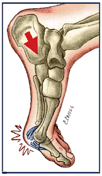 Just because someone tries an exercise in a gym isn’t a reason to make this part of your routine. The gym is full of mostly amateurs, including several of the personal trainers at big name gyms. After all, that’s where many of us started out at one point or another...
Just because someone tries an exercise in a gym isn’t a reason to make this part of your routine. The gym is full of mostly amateurs, including several of the personal trainers at big name gyms. After all, that’s where many of us started out at one point or another...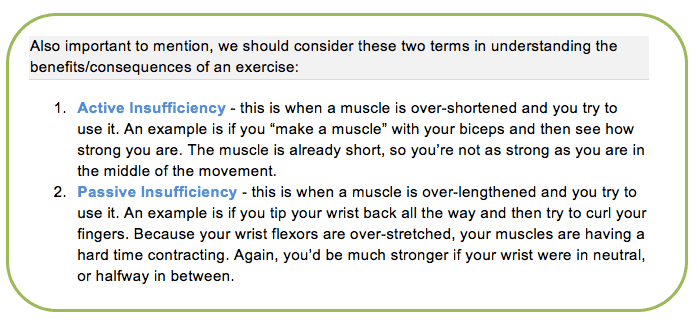
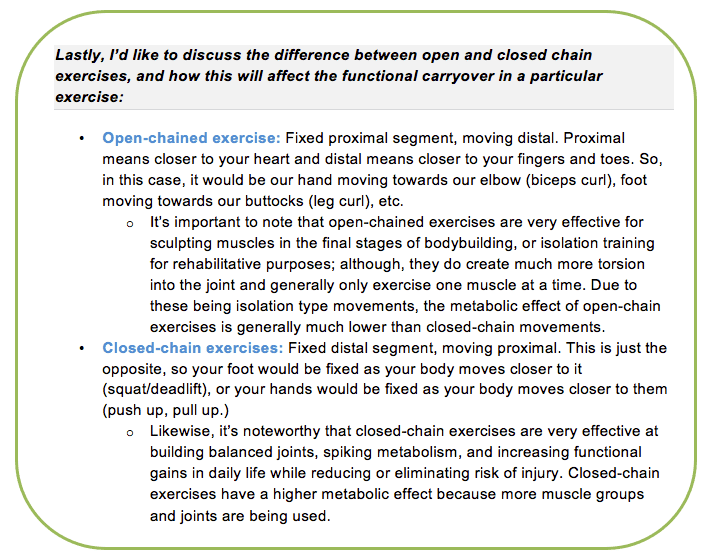

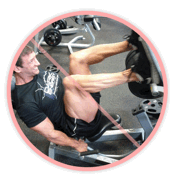 These are awful. Here’s why: Creates muscle imbalances, zero functional benefit, winds up joint to unsafe position
These are awful. Here’s why: Creates muscle imbalances, zero functional benefit, winds up joint to unsafe position
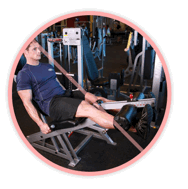 Muscle Balance Perspective:
Muscle Balance Perspective:
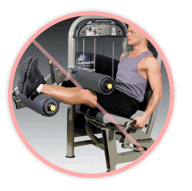 Muscle Balance Perspective:
Muscle Balance Perspective:
 Muscle Balance Perspective:
Muscle Balance Perspective:
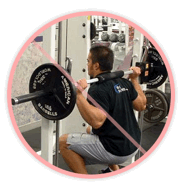 Muscle Balance Perspective:
Muscle Balance Perspective:
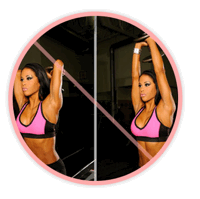 Muscle Balance Perspective:
Muscle Balance Perspective:
 Functional Benefit Assessment:
Functional Benefit Assessment: